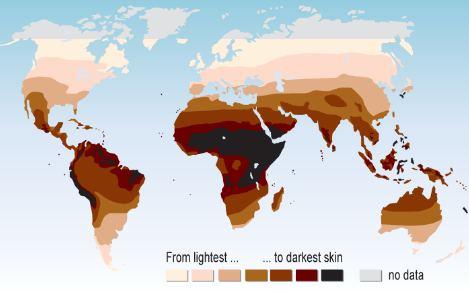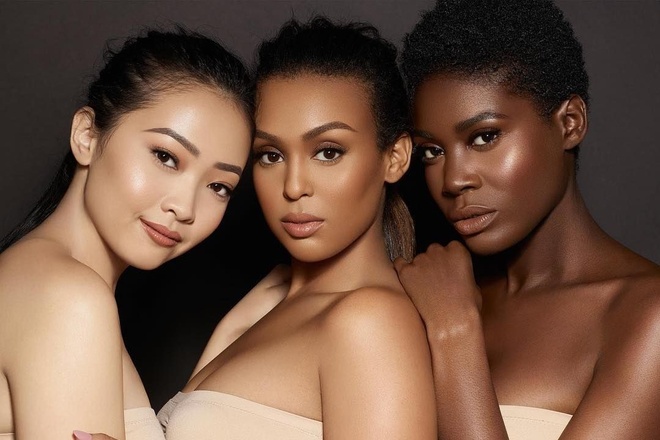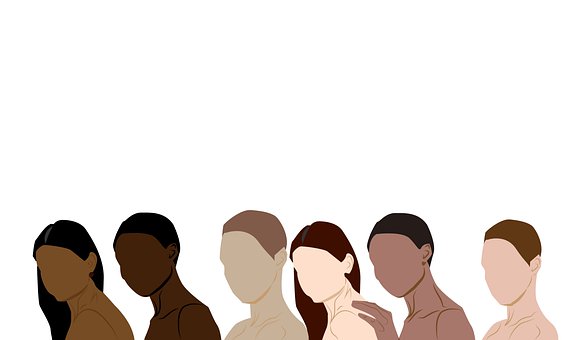Many people are now wondering if we all belonged to the same species, our basic skin tone would be the same. Why do people in this world have diverse skin colors? Our Earth is a very diverse and beautiful place, with millions of species of animals and plants, with humans as the dominating species. Consider humanity as a member of a single species, Homo sapiens, but one thing is certain: the individuals of the species are not all same and have diverse skin colors. Humans have several features that distinguish us from other species, including language, culture, and clothes, as well as height, eye shape, and hair color
Our Earth is a very diverse and beautiful place, with millions of species of animals and plants, with humans as the dominating species. Consider humanity as a member of a single species, Homo sapiens, but one thing is certain: the individuals of the species are not all same. Humans have several features that distinguish us from other species, including language, culture, and clothes, as well as height, eye shape, and hair color. Join Mee Gain to explore the 5 reasons why people around the world have diverse skin colors.
Skin pigmentation (Melanin) is responsible for all aspects of skin color.
Melanin is a pigment that determines our skin color, and while everyone has Melanin (whites and people of color), Melanin occurs in diverse forms and levels.
Melanin is classified into two types: eumelanin and pheomelanin. Eumelanin is predominantly brown and black, whereas pheomelanin is predominantly red and yellow. Melanocytes are a type of specialized cell that produces it.
How does Melanin affect the color of our skin?
Before we can comprehend why we have diverse skin hues, we must first grasp the science of our skin. To begin with, there is no such thing as “black,” “white,” “red,” or “yellow” skin color. Depending on your genetic makeup, you will have a blend of colors and variances.
A person with very dark skin, for example, will create largely eumelanin, whereas a light European person may produce mostly pheomelanin. Perhaps more importantly, skin color determines by the size and amount of melanin granules.
Melanin creates by specialized cells called melanocytes, although not all of them act the same way. Some people produce less melanin naturally, resulting in less pigmentation and paler skin. Others have fewer melanocytes than typical, resulting in paler skin and less overall pigmentation. Although areas without freckles are usually quite pigmented, spots of color on fair-skinned people frequently resemble freckles. People can change their skin color momentarily through tanning (or becoming sunburned), which effectively stimulates the creation of melanin and increases the area to protect against UV exposure.

Why do people have diverse skin colors?
To find out, we need to travel back around 1.2 million years, when “humans” as we know them began to lose their plumage and walk straight. Since then, people have been classified by a natural selection process in which beneficial genes that increase survival features are passed down through future generations. What was the most essential adaptation developed by early humans? The ability to live under direct sunshine.
In the heart of Sub-Saharan Africa, where the sun shines brightly. Early humans living near the equator expose to sunshine and radiation all year, and UV radiation damages the skin, causing cell mutations, increasing cancer risk, and destroying important vitamins in the body.
In this situation, melanin works as a screen against UV radiation, shielding the cells from many of the hazards of overexposure. As our ancestors’ skin grew more exposed to sunlight over thousands of generations, humans adapted to increased quantities of melanin, particularly eumelanin, to filter those dangerous rays.
As a consequence, the darkest people are generally found around the equator, where sunshine is abundant all year; this extends beyond Africa to Asia, South America, and the Middle East!

The necessity of vitamin D
Vitamin D is an important vitamin for human health because it helps the body absorb calcium and other minerals required for bone growth and repair. Unfortunately, our source of vitamin D is the sun; solar radiation mixes with other molecules to help the skin create vitamin D.
So having dark skin implies having a curtain that blocks that radiation, resulting in a lack of sunlight for people who live in colder climes or locations that experience darkness for lengthy periods of time throughout the year and a lack of vitamin D.
The reverse adaptation occurred when humanity migrated around the globe to diverse places, and their skin tone ultimately faded over generations. In Northern Europe and Scandinavia, people’s skin now pales so that it nearly appears translucent, allowing their skin to create enough vitamin D to keep their bodies healthy when they expose to the sun.
The genetic component
Six key genes in the body control the expression of skin pigmentation, and this inherited trait heavily influence by your parents and past generations. Natural selection operates in this way: by correcting, complementing, and modifying genetic makeup.
We detect genetic aberrations in skin color expression, for example. When anomalies increase a person’s chances of surviving, they pass them down to the next generation. The majority of the pigmentation genes have been found, allowing us to monitor the evolution of skin color around the world — and throughout history!
The most important thing to understand about skin color is that we all share a common ancestor from around 200,000 years ago in the heart of Africa, and we all have dark skin.

Final thoughts
The 5 reasons listed above explain why people all over the world have diverse skin colors and there is no uniformity. All human skin color is the consequence of a color compound combination that everyone has; the only difference is the percentage of each hue in that combination.
Even if you are white, if you “bathe in the sun” for a few days, the ultraviolet rays in the sun will not regret it, but will provide you with melanin, so that when you return from a summer vacation at the beach, you will be proud of having “Dark skin”. Keep your skin healthy and check out our article on Five Golden Rules To Take Care Of Naturally Beautiful Skin. Thank you for your time!


Yeah, sure ^^
The diversity of skin color is very interesting and vitamin D supplementation for the skin is an easy method.